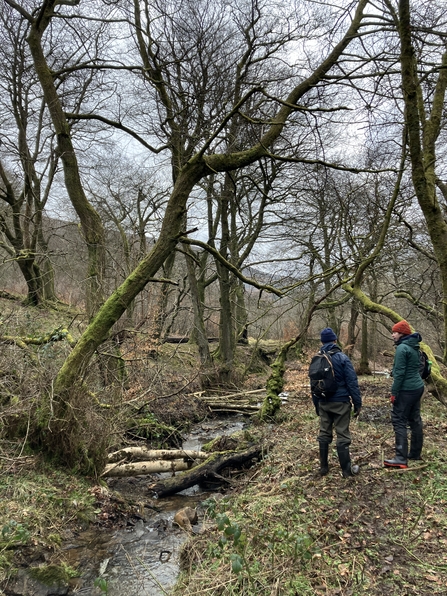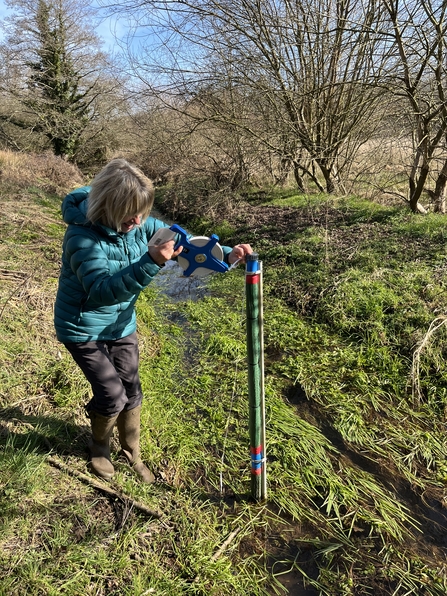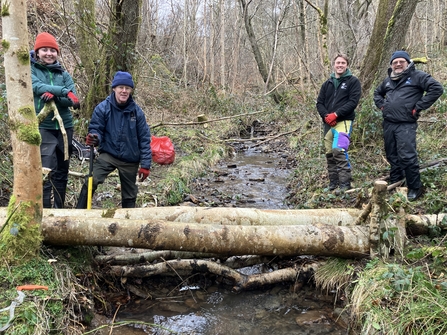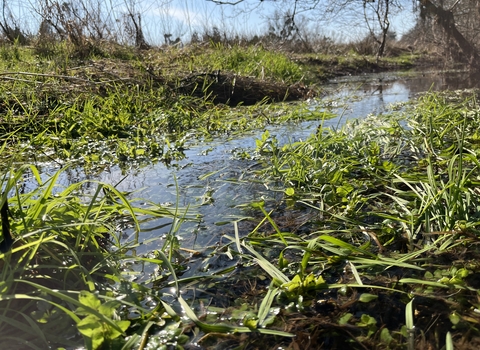Why is there a need?
Our summers are getting drier and our winters wetter. With more frequent storms, more intense rain events and increasing risk of flooding, we must find ways to slow water movement across landscapes and wood can help. Reintroducing woody debris is now a key focus in river restoration and national flood risk policies, supporting the principles of Natural Flood Management.

Gwent Wildlife Trust at work in the Silent Valley
Additionally, wood in streams is essential for healthy and functioning freshwater ecosystems, yet many UK rivers have been modified - deepened, straightened, and stripped of natural debris - degrading flow, sediment distribution, and habitat quality. Historically seen as a flood risk, a great deal of effort has been made to remove wood from watercourses, while grazing pressures and the lack of riverbank vegetation prevents natural replenishment.

Rivers Project - River Usk
The Science
Large woody debris, leaky dams or leaky barriers are structures placed in small streams or watercourses with the intention to naturally slow the flow of water at times of high flows. They are intentionally 'leaky' to always allow baseflow to pass through and not to impound the watercourse completely. When streams rise after rainfall these features have the potential to store water temporarily behind the structure and release it slowly downstream. This can have positive impacts on water quality including filtration, sediment distribution and retention, as smaller particles as well as nutrients and pollutants settle out in slower flowing areas.
These features also enhance habitat complexity by creating varied water flows and sediment sizes, supporting algae, microbes, and invertebrates. They provide shade, refuge and nursery habitat for fish, promote aquatic vegetation, and form scour pools that offer cool-water refuges during low flows. Wood and plant material also support insects like dragonflies, mayflies, stoneflies, and caddisflies when emerging from their aquatic larval to the winged adult stage of their life cycle.
Depending on the design and placement, leaky dams have the potential to reduce flood peaks in small catchments, as they increase the 'travel time' of water across the catchment. They are generally installed in small watercourses, not main rivers. Careful design is crucial to prevent failure and downstream blockages.

Gwent Wildlife Trust at work in the Silent Valley
Our Work in Gwent
At Silent Valley Nature Reserve in Ebbw Vale, we are introducing large woody debris and leaky dams to trial different natural flood management techniques. This site will serve as a demonstration area to share our findings and best practices in the future.
Beyond the reserve, we aim to expand our efforts across Gwent, working with landowners to promote and implement natural flood management on a wider scale.

